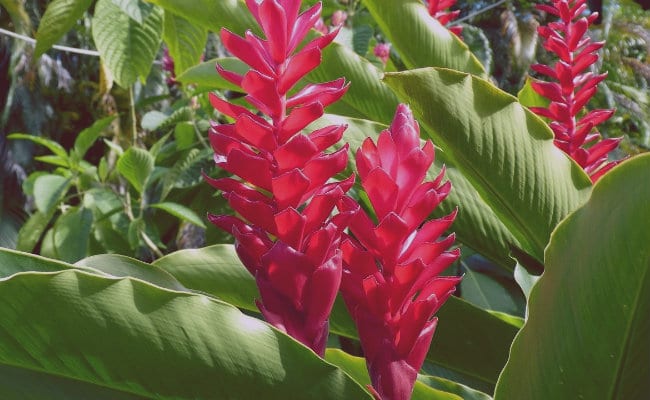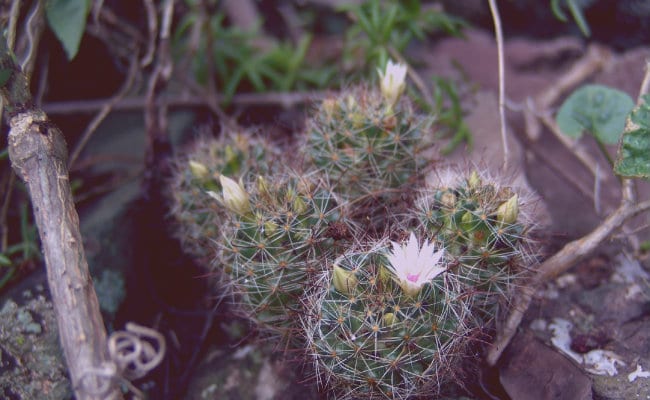Plants produce their own food through a process called photosynthesis, just as animals are living beings and are responsible through chlorophyll to absorb carbon dioxide and convert it into oxygen. They are of utmost importance to human beings, since they produce oxygen in their breathing process which is vital in people's lives.
For this reason, plants in danger of extinction are a sign of the damage that humans are causing to the planet and not only affects themselves, but also the millions of living beings that inhabit it. Below we will show you some of the Latin countries with the highest number of endangered plants.
Latin countries with the most endangered plants

Ecuador
With a total of 1848 species of plants in danger of extinction treated. This is one of the countries with the greatest variety of flora and fauna, this is due to its excellent humid and tropical climate every month of the year, resulting in the shelter of different species, but also, due to deforestation, it is one of the countries worldwide with the most endangered plants. As they are:
- Heliconia (Heliconia brenner, Heliconia dark, Heliconia berryi and): tropical species with more than 100 genus altogether, it is also known as bird of paradise and platanillo.
- ferns (Filicinae, taxon, Polypodiophyta, Pterophyta and ilicopsida): parasitic plant kingdom that, in addition to not producing seed, is also characterized by its large combed green leaves, and does not produce flowers.
- Lauraceae (Aniba pilosa): flowering plant belonging to the Laureles group, with more than 3500 species and 55 genera, belonging to the plants with the highest risk of extinction index in Ecuador.
- Moras (Pseudolmedia manabiensis): in addition to having only two known species in this country, they are already in danger of extinction, although the cause of this is unknown, the national parks associated it with deforestation.
Brazil
With a total of 516 species of plants in danger of extinction treated, this is one of the countries considered, as the greenest in the world, this is due to the numerous species found in the Amazon. However, recent studies indicate that Brazil enters the countries with the most endangered species, like the equator, is due to deforestation of tropical environments, illegal sales and pollution. Mention will be made of the following plants:
- Giant Bromeliad: Beautiful and monumental large plant belonging to the Bromeliad family, native to Brazil, it takes more than 10 years to reach the desired size, it is very popular in gardens and this is due to the striking red and green color of its leaves.
- Orchids or orchids: plant characterized by the complexity of its flowers since it acts in an ecological way with fungi and pollinating bees, absorbing and synthesizing nutrients for itself. This is a parasitic plant sought for illegal trafficking and sale to other countries.
Colombia
With a total of 245 species of plants in danger of extinction treated, this is characterized by having paramos, which have humid forests, it also has savannas, jungles, tropical and xerophilous environments, a variety of habitats capable of housing more than 60.000 types of plants in its beautiful lands. But as in every Latin country deforestation is practiced and there is no awareness of the flora. Some of the endangered plants are:
- Pouteria caimito or curly cumin: Also known in Brazil and Ecuador for its sticky fruits, it is enjoyed and famous in Colombia for its bark that is used to make houses, fences and corrals. It has a height of 26 meters. Due to its excessive felling for its trunk, it has been considered an endangered species.
- Wax palm: In addition to being a national tree of this, it is found in the valleys and can measure up to 2.5 in length, and can have more than 90 years of life, it is a protected species in Colombia, as it is considered a plant that is soon to become extinct.
- Curly cumin or royal road: It is highly sought after in Colombia for the quality of its wood, since they carry out numerous carpentry jobs with its trunk, which is resistant to water and other climatic elements. It is a large tree with 50 cm in diameter and more than 25 meters in height.

Mexico
With a total of 382 species of plants in danger of extinction treated, this country is considered one of the territories with the best ecosystem, the Mexican government created a biodiversity work in charge of promoting the protection and care of the 2500 species, creating awareness of green life. But in the same way they are exposed to deforestation that leads to plants in danger of becoming extinct, among them the following stand out:
- Mammillaria mathildae: also known as cactus, endemic to Mexico. Characterized by its thorns and flowers, it has a globose shape, considered in danger of extinction since they belong to tropical soils and are losing their habitat.
- Lophophora diffusa or peyote: Endemic, it belongs to the group of cacti, with the difference that they grow through the stones (rupicola), they do not have spines like Mammillaria mathildae, on the contrary they are very soft and smooth green in color.
- Pterocereus gaumeri: Also belonging to the Cactus, with a height of 4 to 16 meters, they remain in the shape of a bush because they grow in groups, it is a species with more than 9 members in its genus, they bloom and bear fruit.
- Echinocereus lindsayi: Characteristic for its flower since it can measure more than this one, they also produce edible fruits. These are also used as ornaments for their beautiful flora, they come from the group of cacti with more than 50 known species.
- Artichoke cactus: Also known as peyotillo obregonito, an endemic species, it is known to be used as a medicinal plant, a method used as broad vision antibiotic therapy, and this has led to devastation throughout Mexico, putting it as a plant in danger of extinction.
Peru
With a total of 318 endangered plant species treatedPeru, in addition to being a country with different climatic conditions, has an exceptional flora, since each one adapts to each climate. However, they also have a series of plant species that are being threatened, among them we have:
- The mangrove: Characteristic for its existence clearly in the sea, tolerating high levels of saline concentration, it bears fruit and is found on the coast of Peru, with long branches that can measure more than 16 meters to support the sea floor.
- La Puya Raimondi or Titanca de Raimundo: Originally from Peru and Bolivia, this plant can measure from 3000 to 4500 meters above sea level, it comes from the group of bromeliads and its most peculiar characteristic is that the plant dies when it reaches 100 years, although this fact has not yet been scientifically proven.
- Cat's claw: Originally from the coast of Peru, it belongs to parasitic creeping plants, it can move up to 14 meters in height and is characterized by its medicinal enigma, since the indigenous people said that they could cure any disease with this miraculous plant.
- Quinine tree: Although it is endemic to the Amazon, we can also find it in the jungle of Peru. It is large in size but prevails in humid climates.
Plants and human beings go hand in hand, since they breathe CO2 and when they exhale create oxygen which is crucial for the life of humanity, it is for them that it should be tried as much as possible to protect all green areas, since it would be looking for a good for both species.